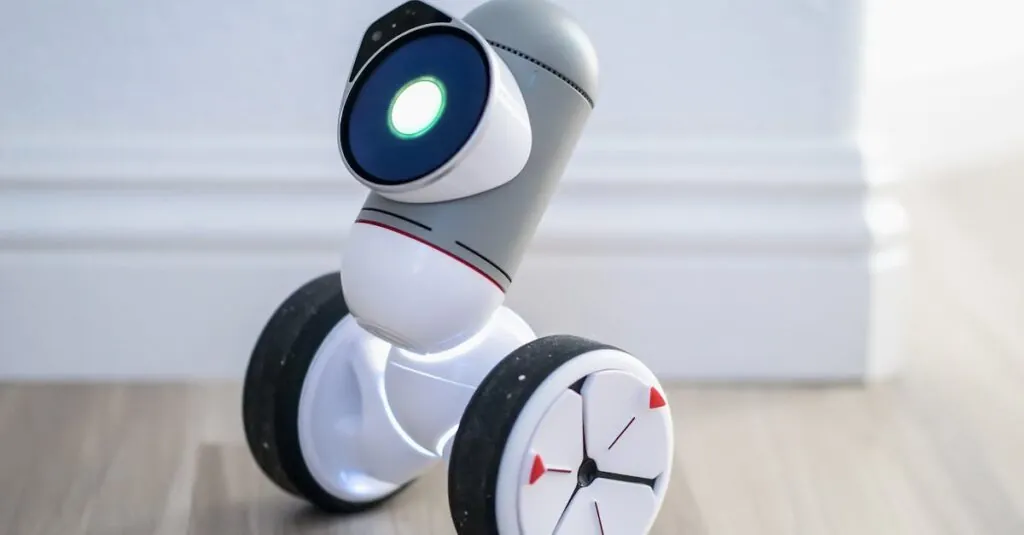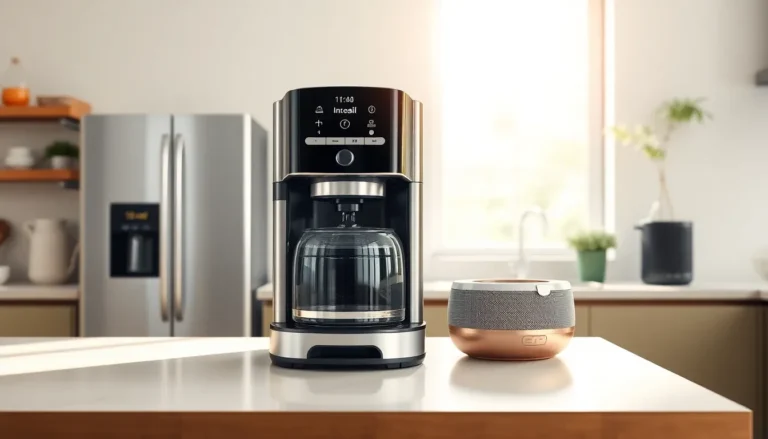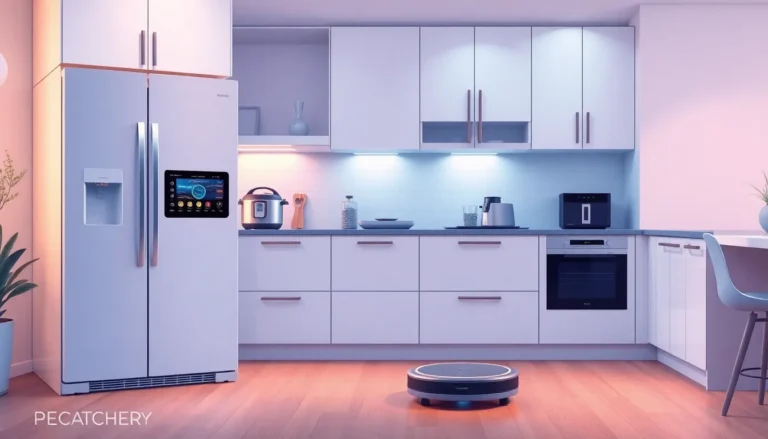Table of Contents
ToggleImagine walking into your home, and it knows you’re there—lights flicker on, the thermostat adjusts, and your favorite playlist starts playing. Welcome to the world of smart home sensors, where technology meets convenience in a way that feels almost like magic. These nifty little devices are not just gadgets; they’re your home’s new best friends, making everyday life smoother and a bit more fun.
Smart home sensors can detect everything from motion to temperature, turning your living space into a responsive environment. They’re like having a personal assistant who never sleeps and always knows what you need. Whether it’s saving energy or enhancing security, these sensors are the unsung heroes of modern living. So, let’s dive into the fascinating realm of smart home sensors and discover how they can transform your home into the ultimate smart sanctuary.
Overview of Smart Home Sensors
Smart home sensors significantly improve the functionality of residential spaces. These devices actively monitor environmental conditions, making homes more intelligent and responsive.
Definition and Purpose
Smart home sensors are embedded technologies that detect changes in the home environment. They serve various functions, such as monitoring temperature, humidity, motion, and light levels. These sensors contribute to energy efficiency by allowing homeowners to manage resources effectively. Security systems incorporate sensors to enhance protection, alerting homeowners to unusual activities. Occupants benefit by enjoying a tailored living experience that adjusts based on their preferences.
Types of Sensors
Different types of smart home sensors cater to specific needs. Motion sensors detect movement within designated areas, triggering alarms or activating lights. Temperature sensors monitor climate conditions, enabling smart thermostats to optimize heating and cooling. Smoke detectors provide warnings in case of fire, ensuring safety. Water leak sensors prevent potential damage from plumbing issues by alerting homeowners early. Light sensors adjust indoor lighting based on natural light availability, contributing to energy conservation.
Benefits of Smart Home Sensors
Smart home sensors provide significant advantages that enhance daily living. Their impact on security and energy efficiency makes homes safer and more economical.
Enhanced Security
Smart home sensors bolster security by offering real-time alerts and monitoring capabilities. Motion detectors activate and notify homeowners of suspicious activities. When combined with cameras, they provide comprehensive surveillance solutions. Additionally, window and door sensors ensure vulnerable entry points remain secure. Enhanced protection extends to smoke and carbon monoxide detectors, which alert occupants of potential dangers. These advancements empower individuals to take swift action, reducing risks and enhancing peace of mind.
Energy Efficiency
Energy efficiency substantially improves with smart home sensors. Temperature sensors adjust heating and cooling systems based on occupancy and preferences. Smart lighting sensors activate and deactivate lights according to natural light levels, minimizing wastage. Homes equipped with these devices report up to a 20% reduction in energy usage, according to a study by the U.S. Department of Energy. Water leak sensors help identify leaks early, preventing excessive water use and costly repairs. Implementing such technologies creates a sustainable environment while lowering utility bills.
Key Features to Consider
Smart home sensors come with several important features that enhance their functionality and effectiveness.
Connectivity Options
Wi-Fi connectivity allows sensors to communicate seamlessly with other devices. Bluetooth provides a reliable alternative for short-range connections. Zigbee and Z-Wave are popular protocols used for creating smart home networks. Each option comes with its benefits, such as energy efficiency or range extension. Consider the existing network infrastructure when choosing sensors, as compatibility plays a crucial role in performance. High-quality sensors connect easily to home automation systems, ensuring efficient communication and control.
Compatibility with Other Devices
Compatibility significantly impacts the effectiveness of smart home sensors. Sensors designed to work with major smart home platforms include Amazon Alexa, Google Assistant, and Apple HomeKit. The ability to integrate with these ecosystems enhances automated tasks around the home. Evaluate the devices already in use before purchasing to ensure cohesive functionality. Sensors that easily pair with other smart devices elevate user experience, creating a harmonious environment tailored to preferences. Prioritize those that not only connect efficiently but also offer ongoing software updates to maintain compatibility.
Popular Smart Home Sensors on the Market
Smart home sensors play a crucial role in modern homes, enhancing efficiency and security. The following sections detail some of the most popular types available.
Motion Sensors
Motion sensors detect movement within designated areas. Many homeowners use these devices for security purposes, as they can trigger alarms or alert users about potential intrusions. Some models incorporate advanced technology, enabling them to differentiate between humans and pets, thereby reducing false alarms. Wireless motion sensors allow easy installation, with battery-powered options eliminating the need for hardwiring. With features like customizable sensitivity levels, users can tailor the responsiveness according to their preferences. Overall, motion sensors significantly enhance home safety.
Temperature and Humidity Sensors
Temperature and humidity sensors monitor indoor climate conditions effectively. These devices ensure optimal comfort while also contributing to energy savings. Some sensors automatically adjust heating and cooling systems based on real-time data, preventing unnecessary energy consumption. Homeowners can receive alerts when temperature fluctuations occur, which safeguards pets and sensitive items. Many models sync with smart thermostats, making integration seamless. Tracking humidity levels also helps prevent mold growth, creating a healthier living environment. By maintaining ideal conditions, temperature and humidity sensors promote comfort and efficiency in smart homes.
Smart home sensors are revolutionizing the way people interact with their living spaces. By providing real-time monitoring and automation they enhance comfort and security while promoting energy efficiency. These devices adapt to individual preferences creating a tailored environment that meets the needs of modern homeowners.
As technology continues to advance the potential for smart home sensors will only grow. With a variety of options available selecting the right sensors can lead to significant benefits. Whether it’s improved safety or reduced energy costs investing in smart home sensors is a step towards a smarter and more sustainable home. Embracing these innovations can transform everyday living into an experience that’s both convenient and efficient.







